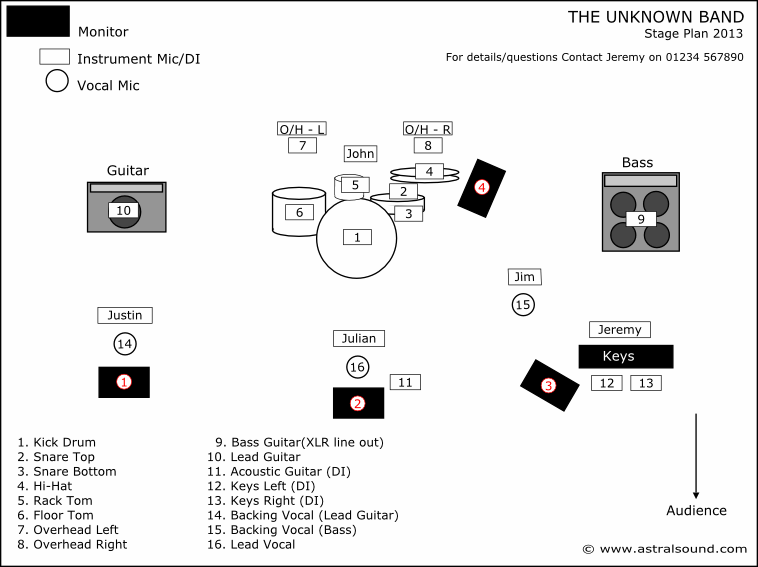

Some engineers choose to set monitor levels while the corresponding musician is playing (ask the drummer what they want in their wedge while you’re checking drums, ask the bassist while you’re checking bass, and so on).

Stage right is to their right, and stage left is to their left. Note : Stage directions are given from the perspective of the performer.

Vocals (from stage right to stage left).Guitars (from stage right to stage left).Cymbal mics /overheads (from stage right to stage left).It’s always a good idea to label channels using console tape, just in case! What’s important is that you know where everything is. Most engineers choose to arrange their channels something similar to this, but you can use whatever order you like. There may be changes from the input list or stage plot. Introduce yourself, let them set up and get comfortable, and then put up whatever remaining mics or DI boxes you need. Load Inīy now, the band should have arrived and started loading in their gear. What frequencies stand out? Does it seem muddy, or boxy, or harsh? Can you feel the low end in your chest? Use a graphic EQ to correct any problem in the room using subtle subtractive EQ. Listen to how the song sounds on this system, in this room. Put on a song that is mixed well, represents all of the frequency ranges, and is somewhat similar to the artist that will be performing.

Repeat this step until the feedback stops (or as close as you can get), and then repeat the whole process for the remaining stage wedges. Identify the offending frequency and attenuate it using a graphic EQ. Send the mic signal to the wedge and slowly turn up the gain until it starts to feed back. Start by placing a vocal mic on a stand in front of the stage right wedge. Now it’s time to ring out the wedges to help prevent any feedback during the show. Note: the term backline can also be used as a verb, meaning to push your equipment back and make room for the opening acts’ gear “There’s no room backstage, let’s backline the amps.” Turn On, Tune In, Drop OutĪfter checking the advance and setting up any necessary gear, it’s time to turn everything on and test the equipment. The backline is any instrument(s) provided by the venue, typically drum kits or amps. The venue usually provides info on the backline in the advance as well. The input list is a list of every mic and/or line they would like to use, and the stage plot is an image of how they usually set up on stage. The advance usually includes an input list and a stage plot from the band.
#Stage plot images bass guitar series
Basically, advancing the show, or the advance, is just a series of emails between the band and the venue confirming the details of the show, like set times, equipment information and payment details. The first step in soundchecking a band is advancing the show, and it happens weeks before the actual event.
#Stage plot images bass guitar how to
If not, you might like How to Book a Gig for Your Band or How to Get a Job at a Music Venue. Congratulations! If you’re reading this article it’s probably safe to assume you’ve got a live gig coming up and you’re looking for some pointers.


 0 kommentar(er)
0 kommentar(er)
